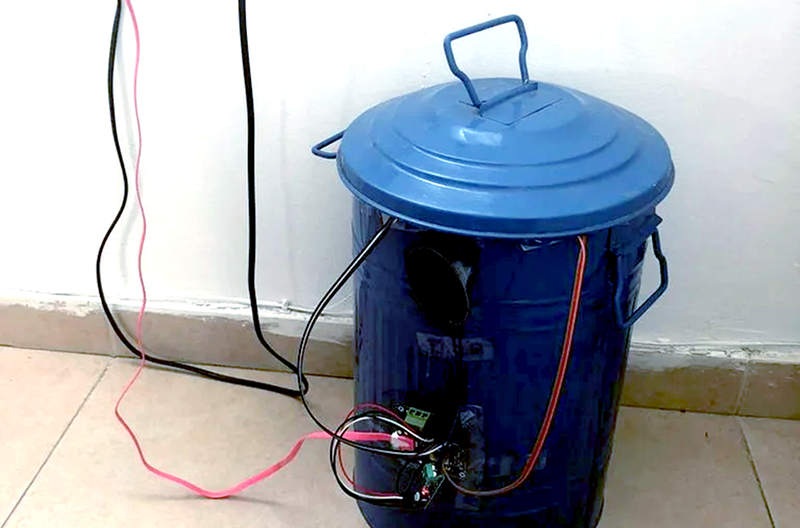No matter who you are, you produce garbage of some kind or another. Two students decided they wanted to create a smart garbage can that could alert them when the can is full or even when it is stinky.
We will go on on the record: we didn’t know that an alcohol sensor could tell if your garbage is stinky, so if that works, that’s a new one on us. However, it makes a certain kind of sense because garbage ferments. We thought garbage smelled because of hydrogen sulfide and methane.
Trash cans have a tough life, so if you really want to duplicate this, you’ll probably want to mount things a bit more securely. The software, however, runs everything through a cloud service and from there can use Blynk for a phone app and IFTTT to ship things to a spreadsheet, should you care to track your garbage history statistics.
You can see in the video this is a small proof of concept can. We almost want to build one just to see if the sensor really knows when the can is smelly.
Granted, the project may not be the most practical, but it is amazing how easy it is now to build devices with a high degree of connectivity thanks to the wealth of inexpensive boards and services available.
This isn’t the first time we’ve seen Blynk. For that matter, it isn’t even our first smart trash can.
















neat and all, but history dictates you know when the garbage is full and stinky … its managing that in coordination with public works that is the hard part for some people (like just about all my neighbors, like FFS pay the 12 bucks a month for a second can if you really generate that much shit in a week)
It depends on what you’re throwing away, but the really stinky stuff is often cadaverine and putrescine, both formed as breakdown products from rotting proteins. Also shorter-chain carboxylic acids, like caproic and butyric acids, have a distinctively bad smell. It’s possible carboxylic acids would set off an alcohol detector, depending on how it works, since their main functional characteristic is an even more easily deprotonated -OH hanging out there than alcohol’s -OH.
They used an MQ3, which the datasheet says picks up ethanol, methane, benzene, hexane, carbon monoxide and LPG (so propane/butane?). With that broad a range I’d be surprised if it didn’t pick up other things, maybe just not with as much sensitivity.
Methane is odourless in any case.
This is like building a device to tell a guy he has a boner. If you can’t look at or smell a trashcan you have other issues.
for a minute i thought this was an rc urbanmech build.